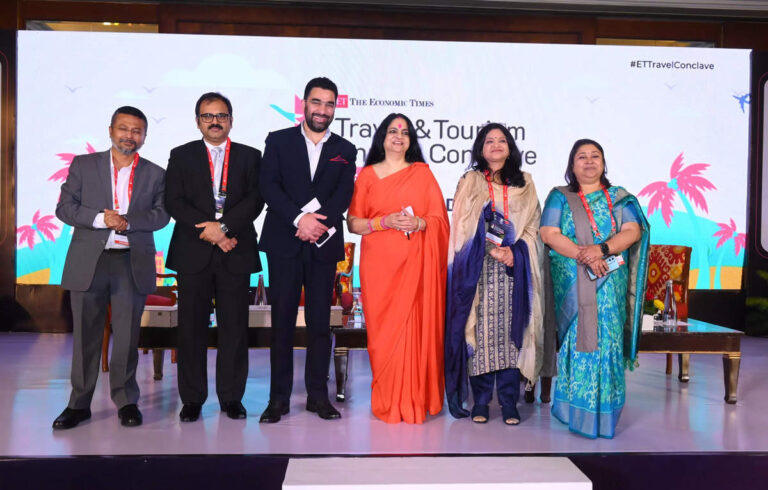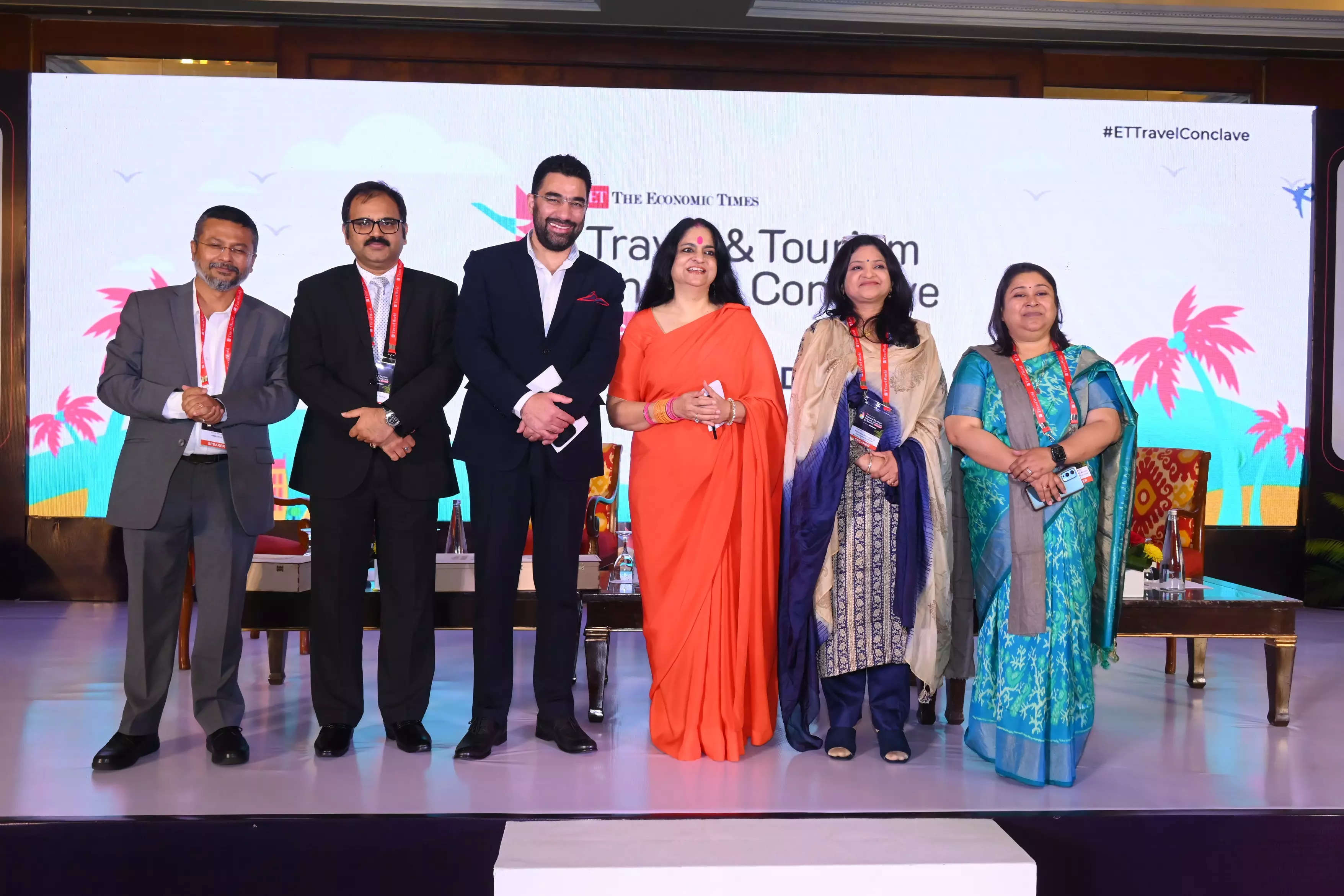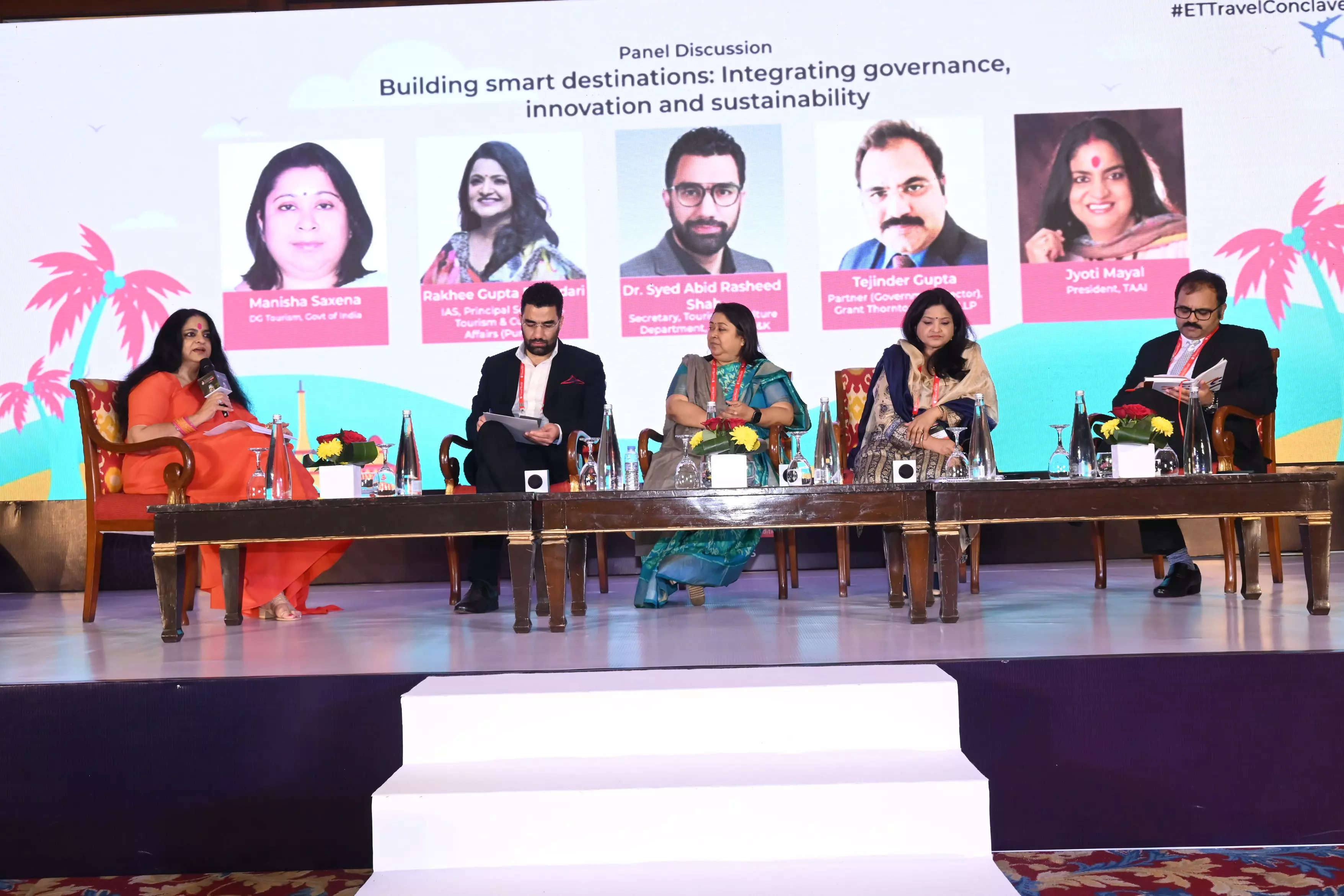
[ad_1]

In a discussion bringing out the intricacies of building smart destinations, the panel at the 2nd edition of Economic Times Travel & Tourism Conclave & Awards, delved into the importance of governance, innovation, and sustainability acting as the cornerstone for crafting efficient and sustainable tourism ecosystems. The insights shared by the expert panelists turned the spotlight on the multifaceted approach required to steer tourism towards sustainability as well as economic prosperity.
Spearheading the discussion, the panel moderator & President of TAAI (Travel Agents Association of India), Jyoti Mayal, emphasised the complex synergy required among stakeholders—governments, businesses, and local communities—to actualise the concept of smart destinations. For her, the combo of governance, innovation, and sustainability forms the bedrock.
“We’re talking about establishing clear governance structures that drive collaboration and coherence among stakeholders. That involves crafting supportive policies, fostering data management frameworks, and more. Innovation, a key driver, prompts the development of technologies improving tourism experiences while preserving sustainability. The integration of governance, innovation, and sustainability is the key to crafting smarter, more sustainable, and resilient destinations,” she stated, throwing open the floor for the panelists.
Adding to this, Manisha Saxena, DG Tourism, Government of India highlighted that the destination management involves making a place attractive, accessible, and eco-friendly while also engaging local communities.
“From planning to social media posts, tourists encounter at least 20 checkpoints, including transportation, cleanliness, local experiences, and safety. Engaging locals not only offers authentic experiences but also makes economic sense. Yet, challenges persist—ensuring diverse experiences, security, and seamless operations,” she said.
“At the Ministry of Tourism, we aim to collaborate with the other ministries with an aim to unveil 50 new destinations (as announced in the budget) in a challenge mode that are exciting, accessible, and safe,” she added.
Jammu and Kashmir, now a prime tourist destination, has experienced a remarkable shift in inbound tourism, especially after the G20. With a staggering count of 1.88 million domestic tourists in 2022, it’s evident that its allure is on the rise. Amidst this surge, the region is pivoting towards sustainable growth, attributing much of this success to the rise of homestays in the popular and newly identified regions facilitated by the homestay policy introduced last year, said Dr. Syed Abid Rasheed Shah, Secretary of the Tourism & Culture Department, Govt of J&K.
“Presently, around 15,000 homestay beds are operational, with an additional 5,000 beds in the development pipeline, totaling an impressive 20,000 beds. These homestays have sparked a remarkable transformation in areas like Gurez and Karnah, drawing visitors and fostering unique experiences in these border regions. Notably, one of these destinations witnessed a significant surge of nearly one lakh visitors post our targeted marketing efforts,” he shared.
However, he cautioned about an impending challenge, given the fact the tourist numbers are rising in J&K. “The imminent issue lies in managing the growing number of visitors—the carrying capacity. This is where these homestays are helping us shift the crowd to lesser known regions.”
“From a sustainability standpoint, these homestays stand as one of J&K government’s most impactful interventions, a resounding success in our pursuit of sustainable tourism,” stated Shah.
Representing Punjab on the panel, Rakhee Gupta Bhandari, Principal Secretary, Tourism & Cultural Affairs (Punjab) articulated that the state’s evolving tourism landscape and emphasis on involving local populations has started to bear fruits for the sector. “Engaging with the community has proven to be a pivotal step for us, stirring enthusiasm among the locals and presenting promising economic prospects,” she said.
She stated that tourism serves as the state’s promotional engine, which helps in attracting investments and creativity. “Going forward, our focus extends beyond the conventional narrative of religious landmarks. Amritsar, which already is a renowned religious spot and has got a push after the G20. We’re not merely branding it as a marriage hub or a religious place; it’s a place of celebration open year-round for various occasions,” she said.
“Moreover, we’re amplifying the appeal of border tourism, uncovering places like Sadki, Hussainiwala, and points beyond the Atari border. We’ve curated themes around these circuits and also promoting adventure sports post the policy launch,” she added.
“Having closely collaborated with governments, particularly in the domain of tourism, my initial reflection on crafting smart and sustainable destinations veers from the conventional tech-oriented perspective. It commences right from the moment an individual steps into an airport, encapsulating the essence of the holiday experience. The crux lies in nurturing lasting impressions and emotions that travellers carry back home,” stated Tejinder Gupta, Partner (Government Sector), Grant Thornton Bharat LLP, drawing on his governmental experience.
Sustainability, he added, becomes the cornerstone here, allowing for repeated experiences. “For instance, initiatives like ‘Travel for Life’ underscore the importance of responsible consumer behaviour. The infrastructure, on the other hand, is also a pivotal element and needs to be sensibly utilised. However, creating infrastructure isn’t the end; efficient operations and maintenance play a critical role. The private sector has a significant role here, engaging in CSR initiatives and collaborations like the ‘Adopt a Heritage’ scheme, illustrating the engagement between public and private sectors,” Gupta stated, while listing suggestions.
Stakeholder involvement: the crux of success
The panel discussion unanimously upheld stakeholder involvement as an indispensable tool needed to create and manage smart destinations.
When asked, Shah emphasised that policies must stem from consultative mechanisms with stakeholders. “To envision a successful policy, one mustn’t overlook the inputs and involvement of those who drive the industry. If overlooked, it can be a recipe for complete disaster. Every intervention we’ve undertaken—be it formulating a houseboat policy or revising our tourism framework—was crafted significantly through stakeholder inputs and involvement of relevant associations. Policies must reflect collective insights to thrive,” he suggested.
“While governments transition, stakeholders remain constant, perpetuating the sector’s growth. Thus, incorporating industry recommendations becomes pivotal,” Shah asserted.
Echoing similar thoughts, Bhandari asserted that the Punjab government’s approach has always involved stakeholders. “Working independently in tourism is impossible for Punjab as involving stakeholders comes naturally to us. Now, the key is to drive change by urging stakeholders to act as catalysts.”
“For us to truly flourish, we seek collaborative support—from the Indian government to every stakeholder invested in our success. Stakeholders’ success is also pivotal for the government’s sustainability, ensuring mutual benefit while preventing collapse and creating a win win situation for both ends,” she added.
Gupta said that local community engagement stands as a pivotal factor in the decision-making process. “We must ensure that the choices formulated at a higher level resonate at the grassroots, prioritising sustainability throughout. Harnessing local resources to actualise this vision becomes imperative in crafting a sustainable tourism experience.”
Saxena stated that while the Ministry of Tourism has been actively implementing strategies to involve stakeholder recommendations through various mechanisms like approach papers and policy drafts, she pointed that these consultations largely remain at a broader scale. “It’s crucial to delve deeper, establishing pockets of excellence, where tangible efforts demonstrate real impact.”
“Our goal eventually is to transform destinations collectively with government, private stakeholders, and communities—creating masterpieces resonating across multiple locations. For instance, during my tenure at Mizoram Tourism, we initiated a digital platform for Thenzawl, which was one of the sanctioned Swadesh Darshan projects. We ensured the attractions listed there were not just icons on a page but actual experiences delivered by locals on the ground. This seamless model, I would urge, should be replicated across destinations for an authentic traveller experience,” she suggested.

Need for democratising tourism, notching up digital presence & word-of-mouth marketing
To shape the paradigm of smart destination development, Shah highlighted the need to democratise tourism. “It’s vital to engage communities in this regard. Restricting the sector to higher levels isn’t productive; we need to bring it to the grassroots. This way, locals feel the economic benefits, making tourism more inclusive and impactful for everyone involved,” he said.
Connectivity, said Bhandari, is a critical factor. “It’s about being visible, accessible, not just digitally but through robust air connectivity too. Prioritising this fosters a two-way flow of information, making it a win-win for all involved in tourism’s growth. It’s the cornerstone.”
Gupta emphasised the significance of e-marketing and word-of-mouth in attracting foreign tourists. He emphasised the role of these tourists as advocates, promoting destinations upon their return.
Saxena reiterated the significance of sustainability for longer term benefits, quoting the Mizoram Tourism’s pledge: “When I explore new places, I will leave nothing but footprints, and take away only memories.”
Summing up the discussion, Mayal emphasised the importance of ‘quality, reliability, credibility, and collaboration with stakeholders’. She also stressed on the role of sustainability and the need to invest in this space to drive credible growth within the tourism industry.
[ad_2]
Source link


